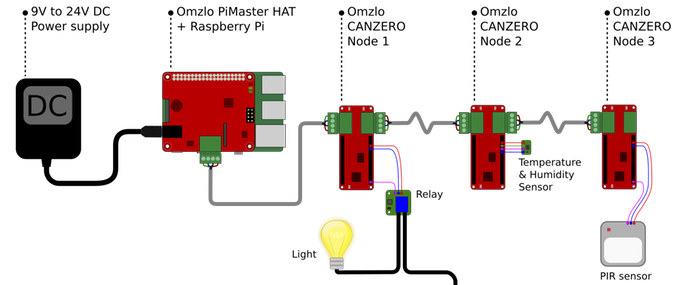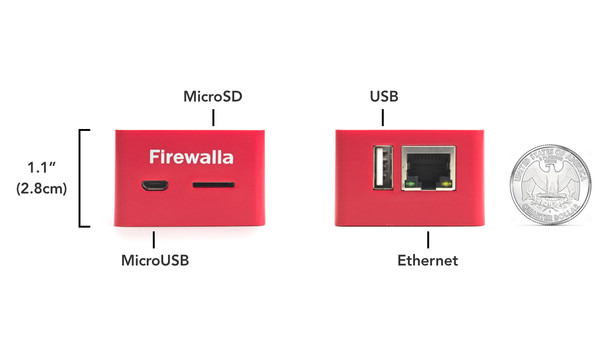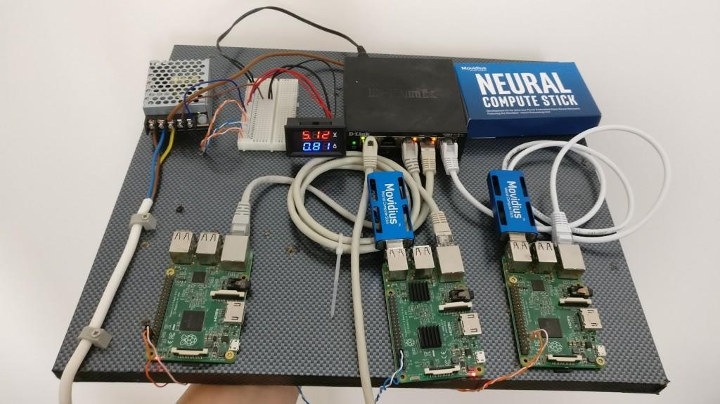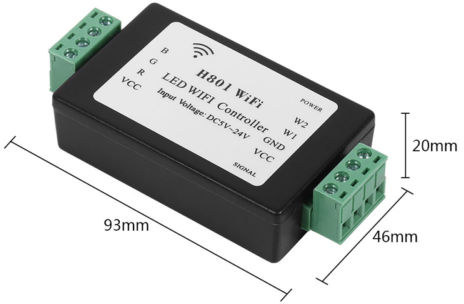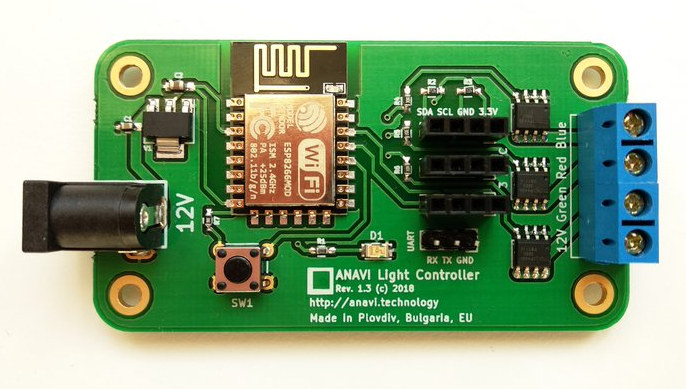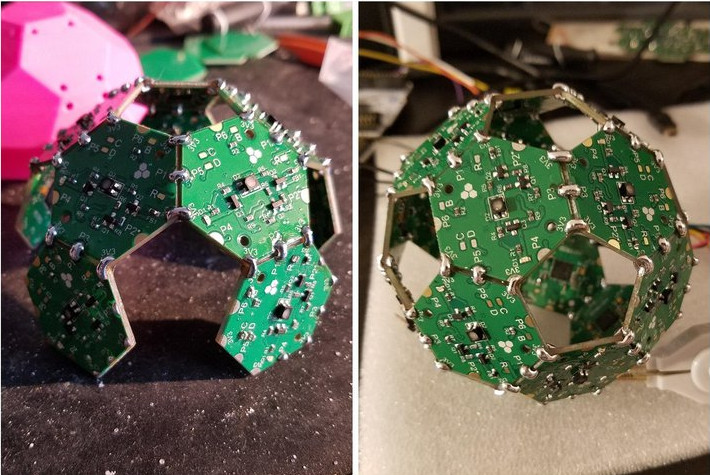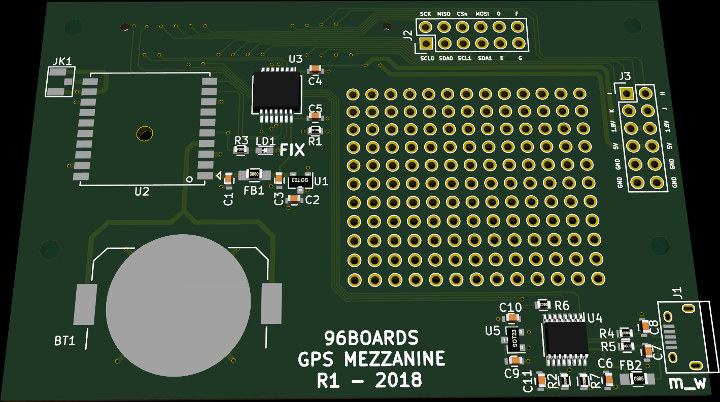Many IoT projects rely on wireless connectivity through WiFi or Bluetooth, but in some cases it may be more reliable and convenient to use wired connectivity. The CAN Bus is a little like a low bandwidth Ethernet PoE solution for IoT, as it allows to transfer data over a serial connection while provided power at the same time, and can be daisy chain to support multiple boards. Omzlo’s NoCAN IoT platform provides a CAN bus solution leveraging Raspberry Pi 3 board through their PiMaster HAT acting as a CAN bus gateway, and Arduino compatible CANZERO boards to which you can connect sensors and actuators. Omzlo PiMaster HAT specifications: MCU – STMicro STM32F042 Cortex-M0 32bit ARM MCU – 48Mhz. Networking – 125000 bps CAN bus up to 300 meters range GPIO – Communicates with Raspberry Pi through SPI + GPIOs Security – Smart power switch with over-current protection. Power Supply – […]
Firewalla is a Tiny Firewall Appliance Based on NanoPi NEO Board
FriendlyELEC Nanopi NEO and NEO2 boards are really cool and inexpensive little Arm Linux boards suitable for all sort of headless application. I’ve reviewed one with their NAS Kit, and run one around the clock as a Domoticz/MQTT server. So it should come as no surprise that some people want to leverage the hardware in their own products, and Firewalla most likely relies on a NanoPi NEO board for their cute firewall/parental control/VPN appliance.Firewalla specifications: SoC – Unnamed quad-core Arm processor @ 1.0 GHz System Memory – 512 Megabyte DDR RAM Storage – 16GB MicroSD Storage Connectivity – 100 Mbit Software Packet Processing Power – 5V via micro USB port Dimensions – 2.8 cm thick The device ships with a flat Ethernet cable, a USB power cable and US type power adapter, and a one year limited manufacturer warranty. The company does not actually mention NanoPi NEO board anywhere, but the specifications […]
Raspberry Pi 3 and Movidius Neural Compute Stick to the Rescue Against Child Pornography
Warning note: While there won’t be any NSFW photos in this post, there will be some photos of ladies in light clothing (e.g. bikini) and “naked” animals for testing purpose… Intel released Movidius Neural Compute Stick allowing low power image recognition at the edge earlier this year, and we’ve seen it work just fine with Raspberry Pi 3 board delivering three times the performance against an inference solution leveraging VideoCore IV GPU. Christian Haschek owns a photo hosting site (PictShare) which happens to run open source code with the same name, and allows user to upload images anonymously. However, he soon found out that at least one user uploaded some child pornography. He contacted the authorities, but then wondered whether there may be others? Since there are simply too many photo on the website to look it up manually, he decided to look for a solution, and went with a […]
$10 H801 WiFi RGB LED Controller Supports Sonoff-Tasmota Open Source Firmware
This week-end, I played with ANAVI Light Controller, an open source hardware solution based on ESP8266 used control 12V RGB LED strips. The board has the advantage of being open source with KiCad schematics, Arduino firmware, and HTML5 server program available, so easy to get started and modify the features as you see fit, and it also supports external I2C sensors via three headers. That’s a low volume project made in Eastern Europe and as a result the board costs $25, so I was shortly made aware there were cheaper solution, and if you are ready to mess around a little bit, H801 WiFi controller appears to be one of the most interesting solution as it sells for under $10 shipped on Aliexpress or eBay, and is officially supported by Sonoff-Tasmota open source firmware. H801 specifications: Connectivity – 802.11 b/g/n WiFi (2.4GHz) with about 10 meter range Output – 5x […]
ESP8266 based ANAVI Light Controller can be Programmed with Home Assistant or the Arduino IDE (Crowdfunding)
ANAVI Technology previously launched a Light pHAT allowing for RGB Light strip connection to Raspberry Pi boards, and during my review of ANAVI Light pHAT with Raspberry Pi 2, it did the job, but if that’s all you want to do, the Raspberry Pi board is clearly oversized & overpowered for the job. So Leon ANAVI got back to the drawing board and designed a similar open source hardware board – called ANAVI Light Controller – with an built-in ESP8266 module that removes the need for a fully fledged Linux board. ANAVI Light Controller specifications: Wireless Module – ESP8266MOD module based on ESP8266 Tensilica L106 32-bit processor Connectivity – WiFi 802.11 b/g/n Expansion Terminal block for 12 V RGB LED strip 3x I2C headers for sensors Debugging – UART header Misc – Button Power Supply – 12 V via power barrel jack Dimensions – 75 mm x 40 mm Certification […]
Hexabitz Modular Prototyping Platform Enables Wire-Free 3D Electronics Designs (Crowdfunding)
A few years ago, I made a Raspberry Pi case made of perfboard and created some sort of DIY modular 3D electronics design by using the top and sides of the case to also hold electronics components and associated circuitry like a relay, and LEDs. The just launched Hexabitz hexagonal / pentagonal modules are designed to make prototyping easier, and also provide flexibility to create all sort of wire-free (3D) electronics designs with minimal soldering. A little over a dozen of modules are currently on offer, most with an STM32F0 Arm Cortex M0 micro-controller: Modules with built-in MCU 01R00, P01R00 – RGB LED (hexagon / pentagon) with Cree Tri-color (RGB) SMD LED, 4-Pin PLCC H02R10 – Bluetooth/BLE V4 based on Laird BT900-SA + chip antenna, +8 dBm max H04R00 – Audio amplifier, speaker, and headphone jack based on ST TS4990IST 1.2W audio power amplifier, 0.7W, 8 Ohm speaker H05R00 – SPI […]
96Boards GPS Mezzanine is the First Add-on Board part of 96boards Community Mezzanine Initiative (Group Buy)
96Boards hardware development platforms support add-on boards called Mezzanines, and you’ll find a bunch of them on 96Boards website. Most are designed and manufactured by companies, but in order to bring more (individual) open source hardware developers on-board, the 96Boards Community Mezzanine initiative was launched to bring industry representatives and community members together. The idea is to encourage people to submit their KiCad/Altium 96boards’ mezzanine designs to the github repository, and the manufacturing costs of the most popular designs can be lowered by offering them through GroupGets group buying platform. The first of those boards to be launched is 96Boards GPS Mezzanine with the following specifications for the R1 board: Adafruit Ultimate GPS Module PA6H_1103854 – 66 channel w/10 Hz updates MTK3339 chipset -165 dBm sensitivity External u.FL antenna connector Fix and PPS signals brought to down baseboard Expansion – USB UART breakout, breakout headers for I2C, SPI, GPIO, and […]
AsteroidOS 1.0 Released – An Open Source Linux OS for Wear OS Smartwatches
We first discovered AsteroidOS, a Linux based open source operating system working on some Android Wear (now Wear OS by Google) smartwatches, in early 2016 while looking at FOSDEM 2016 schedule. The project and community have since grown to support more watches, and a company even tried to launch an AsteroidOS smartwatch (sadly unsuccessfully), but development kept going, and now the very first stable release is out with AsteroidOS 1.0. Some of the highlights of the release: AsteroidOS 1.0 features and apps: phone notifications, an agenda, an alarm clock, a calculator, a music remote control, settings customizations, a stopwatch, a timer, and a weather forecast app. Bluetooth Low Energy (BLE) sync with Android phones using AsteroidOSSync app. Supported hardware LG G Watch, LG G Watch Urbane, LG G Watch R Asus Zenwatch 1, Asus Zenwatch 2, Asus Zenwatch 3 Sony Smartwatch 3 Software emulator for testing and development. Community supported […]


